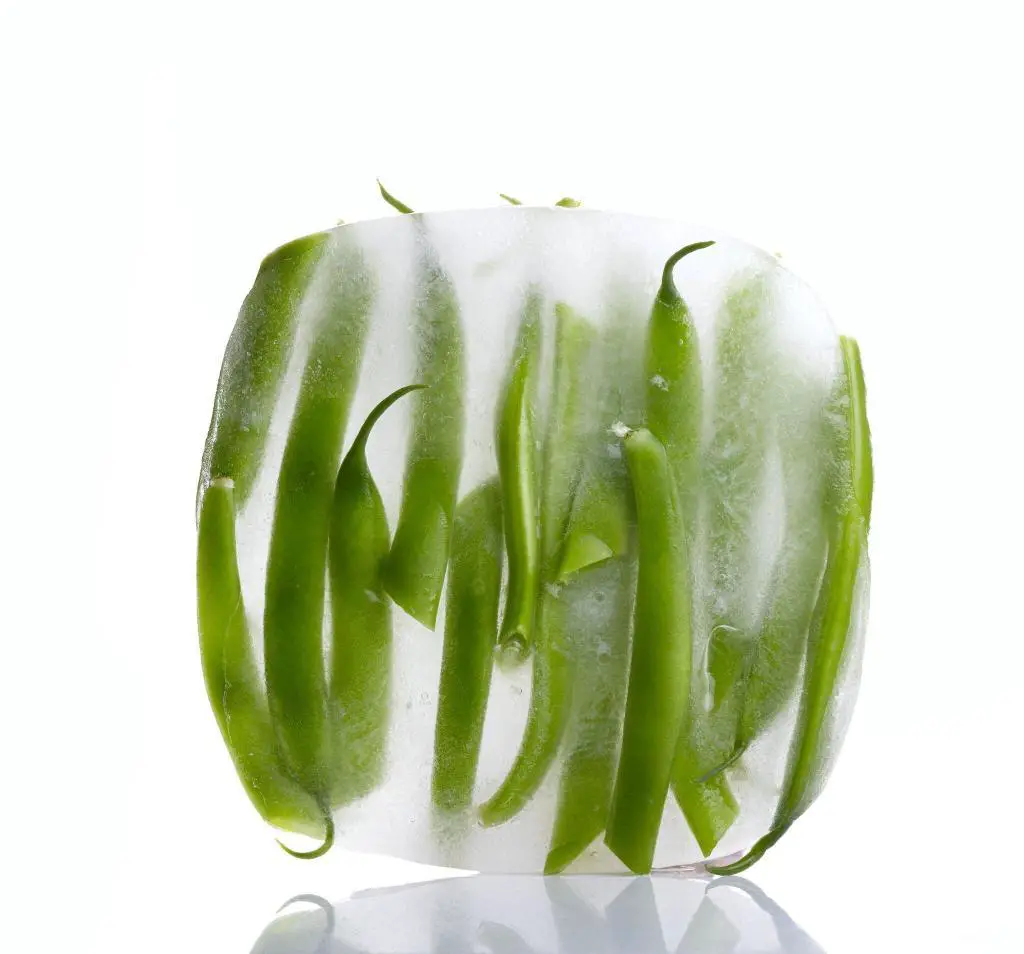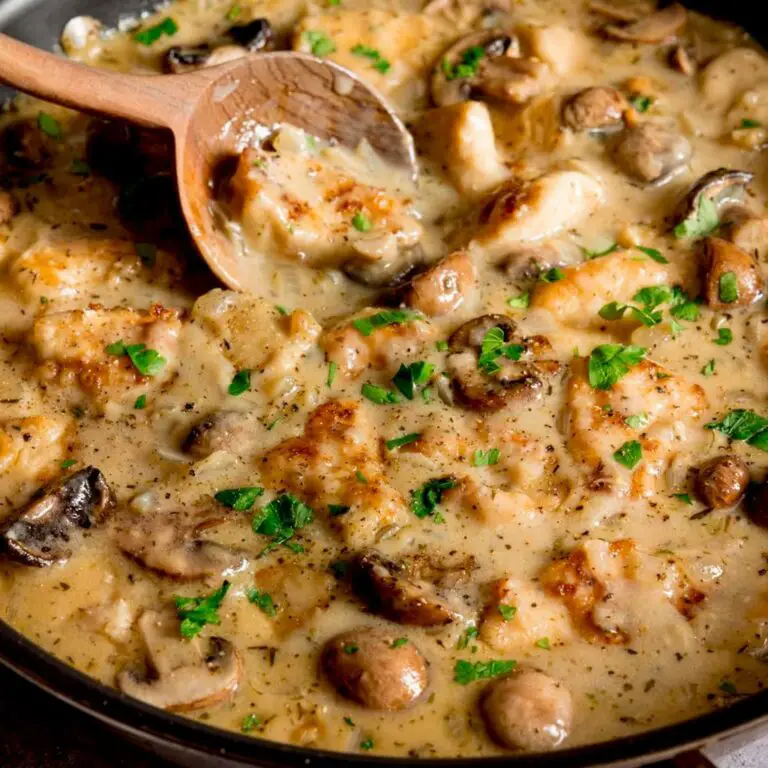How to Freeze Green Beans the Right Way? Preparing Frozen Green Beans

Frozen green beans are a great alternative to fresh beans when they are out of season or when convenience is a top priority. However, many people find that frozen green beans have a different taste and texture compared to fresh beans.
In this blog post, we will discuss the differences between fresh and frozen green beans and provide tips for enhancing the flavor of frozen beans. We will also give you ideas for recipes that use both fresh and frozen green beans to make the flavors more complex.
DIfferences Between Fresh and Frozen Green Beans
Fresh green beans are a staple ingredient in many recipes, especially during the summer months when they are in season. They are often used in salads, stir-fries, and as a side dish to accompany grilled meats. When you eat fresh green beans, the texture is firm and crispy, and the flavor is slightly sweet and earthy.
However, fresh green beans have a relatively short shelf life and can start to lose their flavor and texture within a few days of being picked. Additionally, fresh green beans require preparation before cooking, such as washing, trimming, and blanching.
On the other hand, frozen green beans are a convenient alternative that can be used year-round. They are picked at their peak ripeness and then quickly frozen to preserve their nutrients and flavor. Frozen green beans are available in both whole and chopped forms, making them easy to use in a variety of recipes.
While frozen green beans may not have the same firm texture as fresh green beans, they can still be used in many dishes, including casseroles, stir-fries, and soups. In some cases, the softer texture of frozen green beans may even be preferable, such as in stews or other dishes where the green beans need to be cooked for a longer period of time.
Another benefit of using frozen green beans is that you don’t have to do much to get them ready to cook. Simply remove the desired amount of frozen beans from the package and add them directly to your recipe. This can save time and effort, especially on busy weeknights.
In terms of nutritional value, fresh and frozen green beans are comparable. Both varieties are rich in vitamins and minerals, including vitamin C, vitamin K, and folate. But because they are frozen, frozen green beans may have a little less vitamin C than fresh green beans.
How To Prepare Green Beans for Freezing
1. Choosing the Right Green Beans for Freezing
When it comes to freezing green beans, selecting the right type of beans is crucial for a successful outcome. Ideally, you should choose fresh, young, tender, and flavorful green beans that are free from blemishes and bruises. These types of green beans will retain their taste, texture, and nutrients better after freezing.
You should also consider the variety of green beans that you’re using. Some varieties, such as Blue Lake or Kentucky Wonder, are known for their excellent flavor and are well-suited for freezing. Others, like Romano or Italian beans, tend to be tough and may not freeze well.
TIPS 
If you’re growing your green beans, try to pick them when they’re at their peak freshness. For store-bought green beans, check the expiration date and select those that are as fresh as possible. Avoid using green beans that are overly mature or tough, as they will not freeze well.
2. Washing and Trimming Green Beans for Freezing
Before freezing green beans, it’s important to wash them thoroughly to remove any dirt, debris, or pesticides. Begin by rinsing the green beans under cold running water and removing any stems or leaves.
Next, trim the ends of the green beans. You can either use a knife or snap off the ends with your fingers. If your green beans are particularly long, you may want to cut them into smaller pieces for easier storage.
Once you’ve trimmed your green beans, you can blanch them to help preserve their color, texture, and nutrients.
3. Blanching Green Beans for Freezing
To blanch green beans, you put them in boiling water for a short time and then quickly put them in ice water. This process helps to stop the enzymes that can cause the beans to deteriorate over time.
To blanch green beans, fill a large pot with water and bring it to a boil. Add the green beans to the boiling water and let them cook for about 2–3 minutes, depending on their size. Remove the green beans with a slotted spoon and immediately plunge them into a bowl of ice water to stop the cooking process.
Once the green beans are cooled, drain them and pat them dry with a clean towel.
4. Cooling Green Beans before Freezing
After blanching the green beans, it’s important to cool them thoroughly before freezing. This can be done by spreading the green beans in a single layer on a baking sheet and placing them in the freezer for about 30 minutes.
Alternatively, you can place the green beans in a colander and run cold water over them for a few minutes until they’re completely cooled.
5. Packaging Green Beans for Freezing
To freeze green beans, you’ll need to package them in airtight containers or freezer bags. Make sure to remove as much air as possible from the packaging to prevent freezer burn.
TIPS 
If you’re using freezer bags, you can squeeze out the air manually or use a vacuum sealer. For airtight containers, make sure the lid fits tightly, and consider placing a layer of plastic wrap or parchment paper on top of the green beans to prevent freezer burn.
6. Labeling and Storing Frozen Green Beans
Before storing your frozen green beans, be sure to label the packaging with the date of freezing. This will help you keep track of how long the green beans have been in the freezer.
Frozen green beans can be stored in the freezer for up to 8-10 months, although it’s best to use them within 6 months for optimal flavor and texture.
Step 7. Thawing and Cooking Frozen Green Beans
To use frozen green beans, simply remove them from the freezer and let them thaw in the refrigerator overnight. Once thawed, you can cook them using your preferred method, such as steaming, boiling, or sautéing.
If you’re in a hurry, you can also thaw the green beans in the microwave using the defrost setting. Be sure to check on them frequently to prevent overcooking.
When cooking thawed green beans, you may notice that they are slightly softer than fresh green beans. To keep their texture, don’t cook them too long and maybe add a little salt or vinegar to the water you use to cook them.
Frozen green beans can be used in a variety of dishes, including soups, stews, casseroles, and salads. They are a convenient and nutritious way to add vegetables to your meals year-round.
In conclusion, preparing green beans for freezing requires a few simple steps, including choosing the right beans, washing and trimming them, blanching and cooling them, packaging and labeling them, and finally, thawing and cooking them when you’re ready to use them.
By doing these things, you can make sure that your frozen green beans keep their taste, texture, and nutrients for months.
How to Thaw Frozen Green Beans
Frozen green beans are a great ingredient to have on hand because they make it easy to make a meal, but it’s important to thaw them the right way to keep their texture and flavor. Here are some tips on how to thaw frozen green beans:
- In the Refrigerator: Thawing frozen green beans in the refrigerator is the most common method and requires some planning ahead. Simply transfer the frozen green beans from the freezer to the refrigerator and allow them to thaw for several hours or overnight. Thawed green beans can be stored in the refrigerator for up to 3-4 days.
- In Cold Water: If you’re short on time, you can thaw frozen green beans quickly by placing them in a large bowl of cold water. Change the water every 30 minutes until the beans are thawed, which should take around 1-2 hours. Be sure to drain the green beans well before using them.
- In the Microwave: Thawing frozen green beans in the microwave is the fastest method, but it can be tricky to avoid overcooking them. To do this, place the frozen green beans in a microwave-safe dish and microwave them on the defrost setting for 2-3 minutes. Check on them frequently and remove them as soon as they are thawed.
Once your frozen green beans are thawed, it’s important to handle them carefully to prevent any loss of quality. You should avoid overcooked green beans, which can result in a mushy texture and loss of nutrients.
Consider adding them to soups, stews, or casseroles towards the end of the cooking time or blanching them for a few minutes before using them in salads or stir-fries.
Creative Ways To Use Frozen Green Beans in Salads
Green beans that have been frozen are easy to use and can be used in many different ways. They can add flavor and nutrition to salads. Here are some creative ways to use frozen green beans in salads:
- Mediterranean Salad: Combine thawed frozen green beans with cherry tomatoes, cucumbers, red onion, feta cheese, and kalamata olives. Dress with a lemon vinaigrette and serve with crusty bread.
- Green Bean and Potato Salad: Boil red potatoes until tender, then add thawed frozen green beans and cook for an additional minute. Drain and toss with a mustard vinaigrette, chopped fresh dill, and sliced scallions.
- Thai Salad: Combine thawed frozen green beans with shredded carrots, sliced red bell pepper, chopped cilantro, and chopped peanuts. Dress with a peanut-lime dressing and garnish with sliced jalapeno.
- Roasted Green Bean Salad: Toss thawed frozen green beans with olive oil, salt, and pepper, then roast in the oven at 400 degrees F for 10-12 minutes until slightly browned. Combine with cherry tomatoes, crumbled goat cheese, and a balsamic vinaigrette.
When using frozen green beans in salads, it’s important to add texture and crunch to balance out their soft texture. Here are some tips for achieving that:
- Lightly fry the green beans: Heat a small amount of oil in a pan over medium-high heat. Add thawed frozen green beans and cook for 2-3 minutes until slightly crispy. Drain on paper towels before adding to the salad.
- Roast the green beans: Toss thawed frozen green beans with olive oil, salt, and pepper, then roast in the oven at 400 degrees F for 10-12 minutes until lightly browned.
- Add crunchy toppings: Top the salad with chopped nuts, seeds, or croutons to add texture and crunch.
By incorporating thawed frozen green beans into your salad recipes and using these tips to add texture and crunch, you can create delicious and nutritious salads that everyone will love.
Baked Frozen Green Beans Recipes
Baked frozen green bean recipes are a great way to enjoy the convenience of frozen beans in a warm and comforting dish. Whether you’re looking for a side dish to serve with dinner or a main dish for a potluck or gathering, there are many creative ways to bake frozen green beans that will impress your guests.
One of the best things about using frozen green beans in baked dishes is that they are already prepped and ready to go. You don’t need to spend time trimming and blanching fresh beans, which can save you a lot of time and effort. To make a delicious baked green bean dish, all you need are a few simple ingredients and some creativity.
Here are a few recipe ideas for baked frozen green beans:
- Green Bean Casserole – This classic dish is always a hit at holiday gatherings or family dinners. To make the casserole, mix frozen green beans with cream of mushroom soup, milk, and French-fried onions. Top with more onions and bake in the oven until golden brown and bubbly.
- Green Bean Gratin – For a more elegant and sophisticated dish, try making a green bean gratin. To make the gratin, layer frozen green beans with a creamy cheese sauce and top with breadcrumbs and grated Parmesan cheese. Bake in the oven until the cheese is melted and the top is crispy and golden brown.
- Roasted Green Beans – If you prefer a simpler dish, try roasting frozen green beans in the oven with some olive oil and seasoning. Toss the beans with garlic, lemon, and red pepper flakes for a flavorful and healthy side dish.
When making baked green bean dishes, it’s important to layer the beans in a way that allows them to cook evenly and develop a nice texture. Start by preheating your oven and greasing a baking dish with cooking spray or butter. Then, arrange the frozen green beans in a single layer in the dish, making sure they are evenly spaced and not overlapping too much. If you’re making a casserole or gratin, layer the beans with the other ingredients to create a cohesive and flavorful dish.
To season your baked green bean dish, consider using a variety of herbs and spices, such as garlic, onion powder, paprika, thyme, or rosemary. You can also add a creamy or cheesy element to the dish, such as sour cream, cream cheese, or shredded cheddar. Don’t forget to top your dish with breadcrumbs, cheese, or crispy onions for added texture and visual appeal.
In conclusion, baked frozen green bean recipes are a delicious and easy way to enjoy this versatile vegetable. Whether you’re making a classic casserole or a more elegant gratin, there are many ways to layer and season the beans to create a flavorful and visually appealing dish. So the next time you’re looking for a tasty and convenient side dish, give baked frozen green beans a try!






